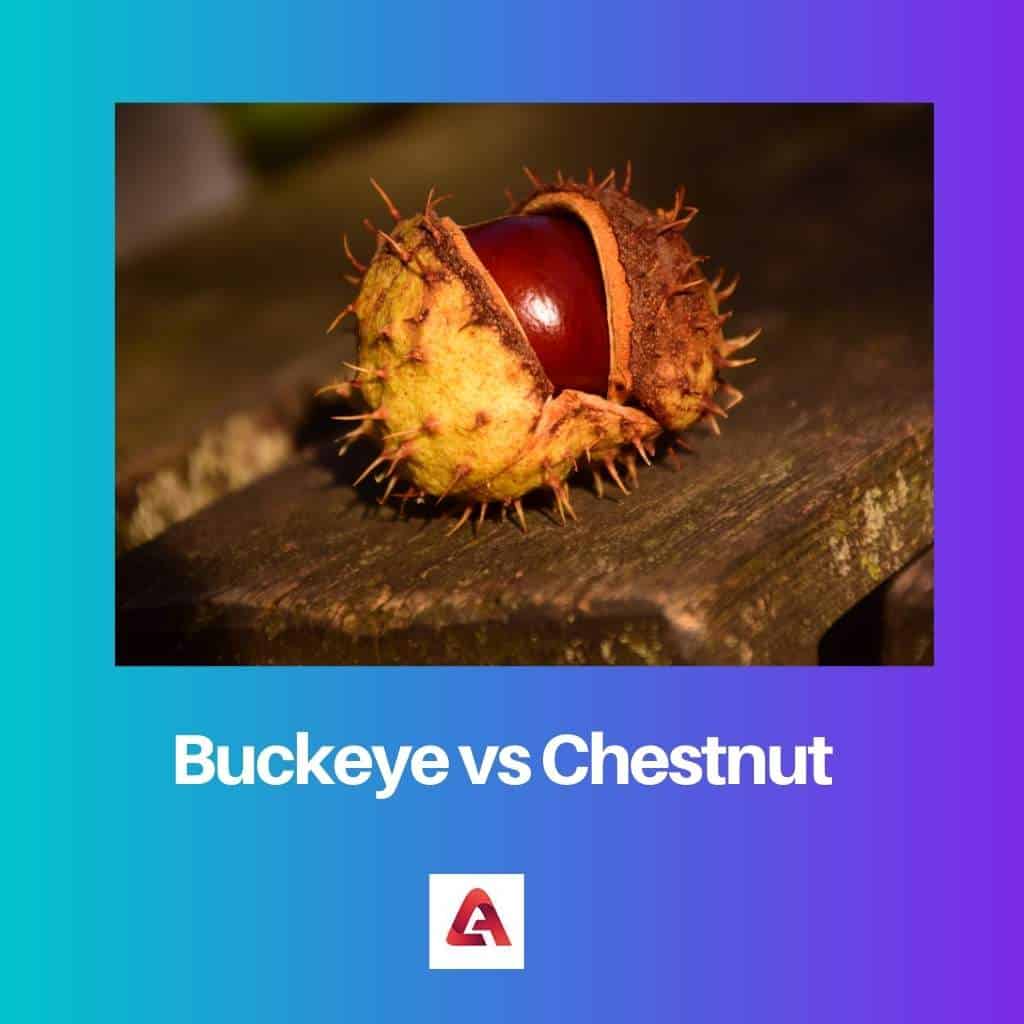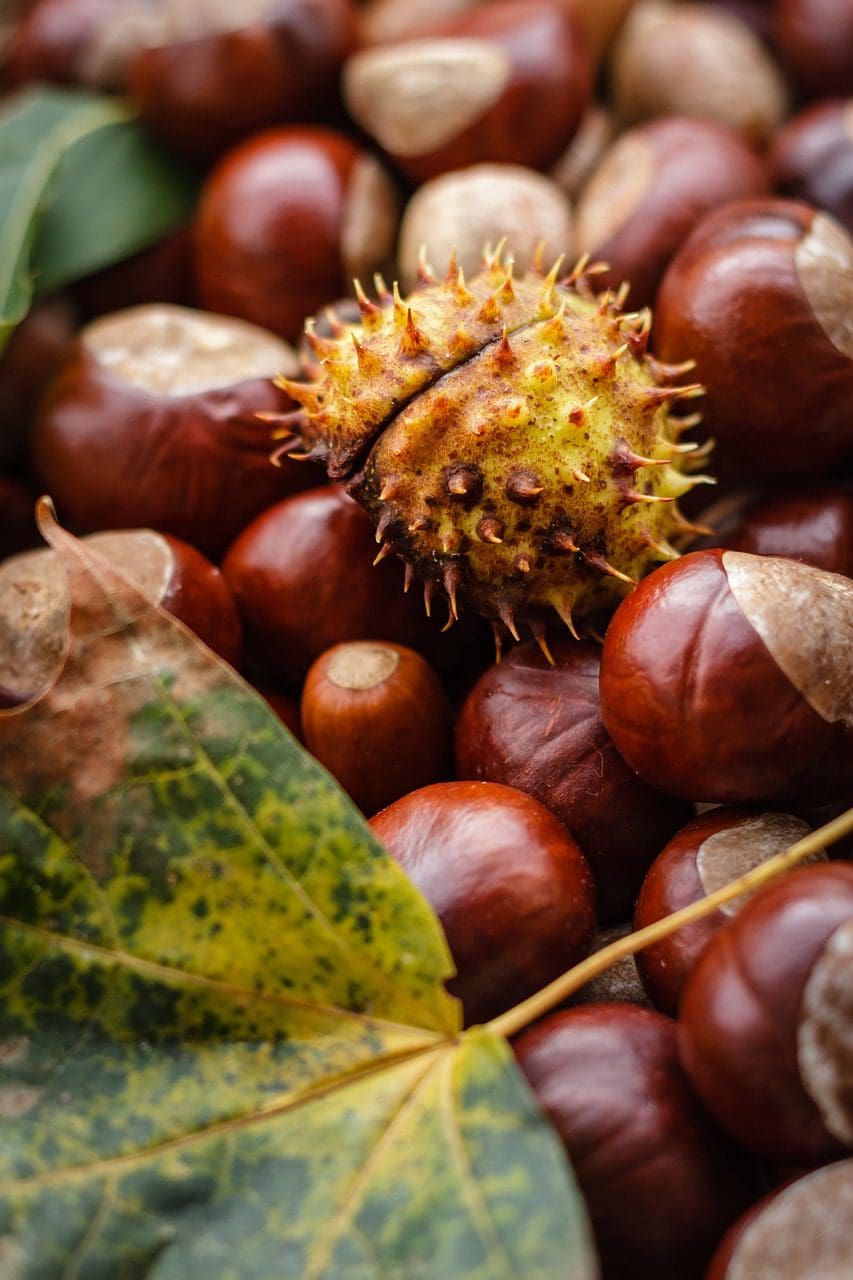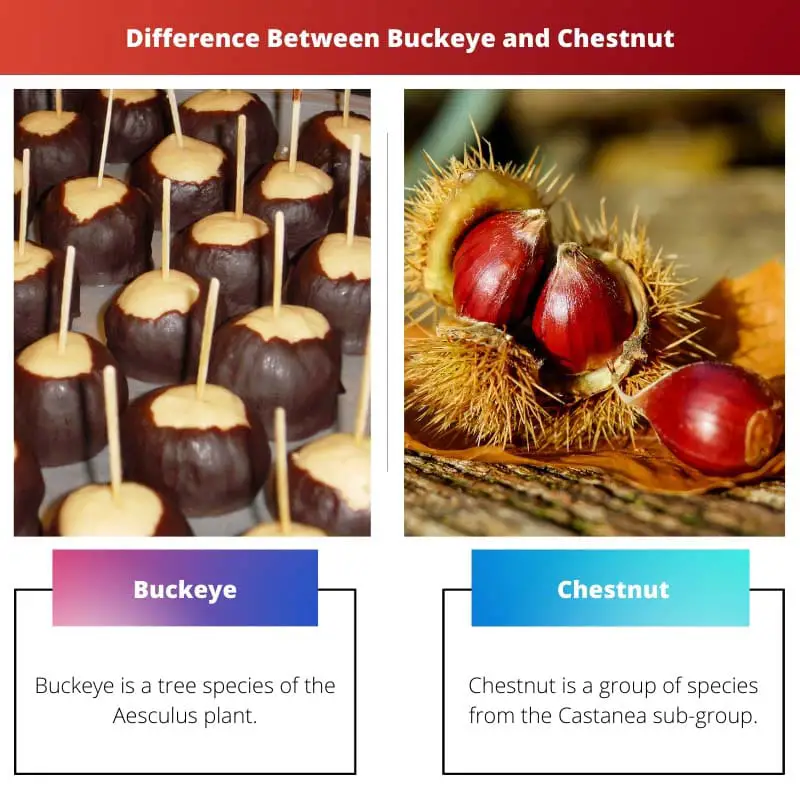We may observe different plants and trees that give various types of fruits. A plant from the same family contains sub-plants which provide the fruits with some differences.
Key Takeaways
- Buckeyes are trees from the Aesculus genus, while chestnuts belong to the Castanea genus.
- Buckeye nuts are toxic to humans, while chestnuts are edible and used in various culinary dishes.
- Buckeye trees have palmately compound leaves, while chestnut trees have simple, toothed leaves.
Buckeye vs Chestnut
Chestnuts carry larger seeds compared to Buckeye. Buckeyes have one fruit in the pod, while Chestnuts have two or three. Buckeye trees have fans of five leaves, while chestnut leaves are fans of six or seven. Chestnut leaves are larger than buckeye leaves. Unlike Chestnuts, Buckeye seeds are inedible.

The Buckeye tree species originated from North America, where we can primarily find them in the Midwestern United States and extends to the South-West regions.
In Contrast, Chestnuts are a group of species from the evergreen trees of the Castanea subfamily. The group contains 8-9 species, where chestnut species are a member of the Castanea genus from the Fagaceae family.
Comparison Table
| Parameters of Comparison | Buckeye | Chestnut |
|---|---|---|
| Meaning | Buckeye is a tree species of the Aesculus plant. | Chestnut is a group of species from the Castanea sub-group. |
| Origin | It had originated from the North American Countries that extends to Southeast countries. | Chestnuts are available in the Northern regions. |
| Labels | Buckeye has other labels like Ohio Buckeye and Aesculus Glabra. | Another label of the Chesnut is Edible nuts. |
| Difference | Leaves will appear in narrow shapes and, the seed is in medium size. | The leaves of the Chestnuts are long and, the chestnut group contains 8-9 species. |
| Classification | Buckeye is a member of the Aesculus family. | Chesnuts are from the Beech Family. |
What is Buckeye?
As we know, there had so many kinds of trees divided by their family. Buckeye is one of the tree species from the Aesculus genus family. Buckeye is a short name for Ohio Buckeye.
The Buckeye tree provides medium-sized seeds. The Leaves will appear in narrow shapes, and the Buckeye seeds of the Ohio Buckeye are in medium size.
The Buckeye nuts are poisonous, and everyone must avoid eating these nuts. An individual can eat these by removing the coverings and after roasting.
The order of the Buckeye nuts is Sapindales, and these are from the Plantae Kingdom. We can find the Buckeye species on moist soil, floodplains, drylands and rarely on the roadside.

What is Chestnut?
Chesnuts are a type of plant species containing large leaves. Chestnuts are a group of species from the evergreen trees of the Castanea subfamily.
Chesnuts are from the Beech Family, and the rank of these nuts is Genus. Castanea is the scientific name of this group of nuts that are popularly known in European Countries.
The seeds must be stored in cold places for up to 3 months before they sprout, and these can plant in February and March. The Chestnut seeds must scatter in warm and sunny places at 70-80 degrees of temperature conditions.
- Chinese Chestnuts
- Sweet Chestnuts
- American Chestnuts
- Castanea Crenata Chestnuts
The chestnuts contain 2 grams of proteins, 44% of Vitamin C, 10%of Vitamin B6, Magnesium, Iron, Calcium, Potassium and some other healthy nutrients.

Main Differences Between Buckeye and Chestnut
- Buckeye trees have arrow leave medium size nuts whereas the Chestnut species contains long leaves with large seeds.
- Buckeye nuts are famous in America, where Chestnuts had popularly known in European Countries.




